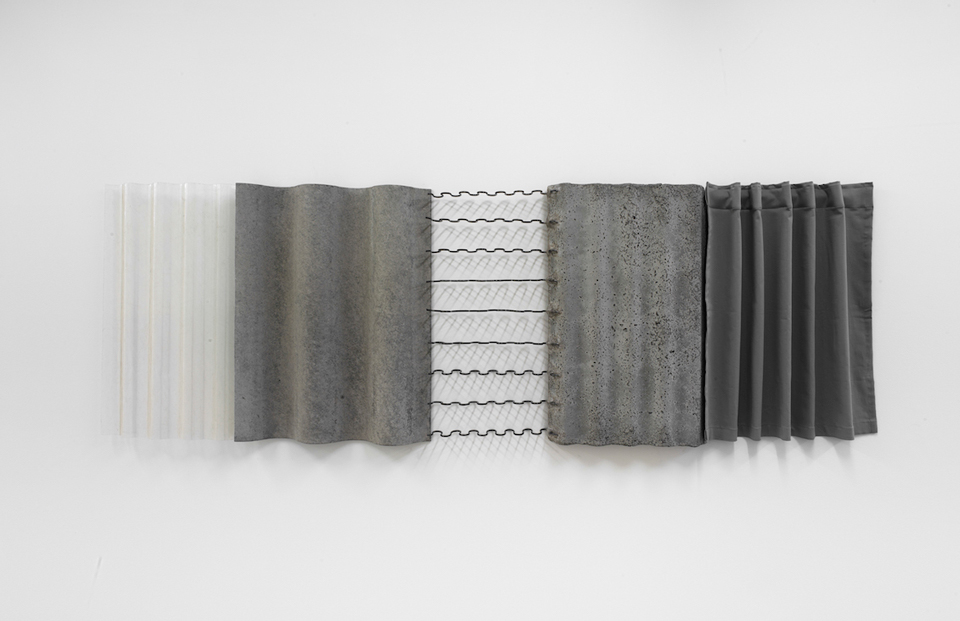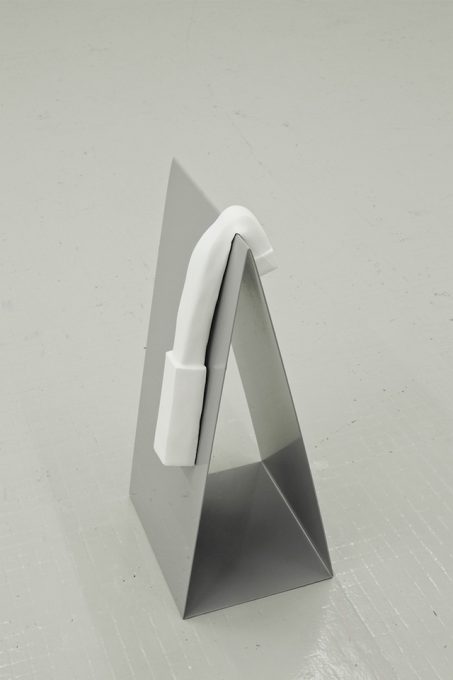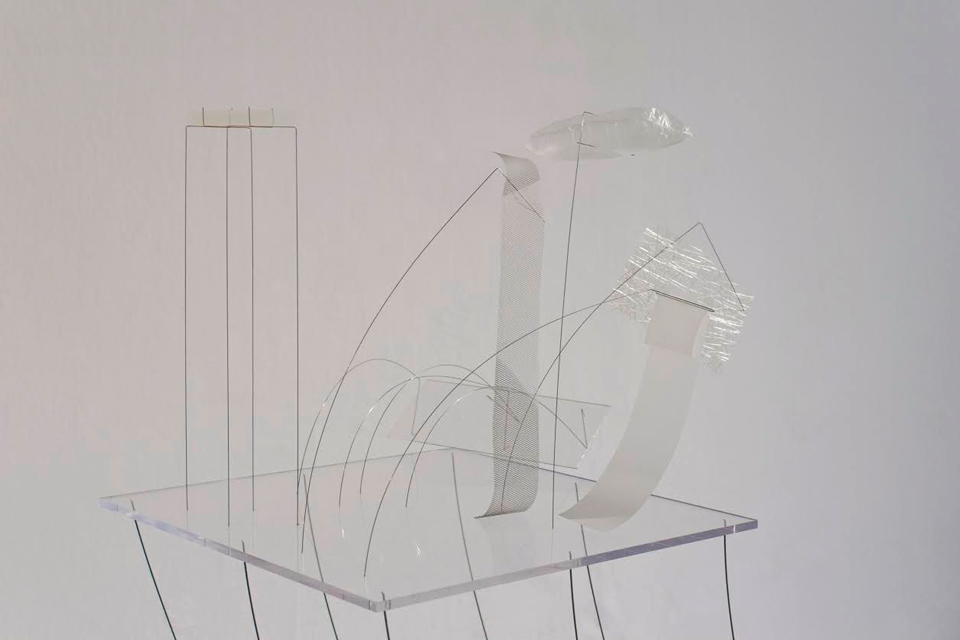The intense and formally varied works by Rafał Dominik are situated in a very different domain than Gizela Mickiewicz’s restrained sculptures. Yet despite their many differences, and despite the two artists’ differing approach to artistic substance, their exhibitions at the Arsenal Gallery have not been conceived as parallel by accident.
The works by Rafał Dominik are an explosion of colour, an attempt at capturing emotions, a sketch of feelings shown through a broad variety of techniques, materials and artistic approaches. Dominik is inspired by popular culture, by exquisitely designed shop windows, by mndane objects found by accident or acquired over the Internet. The artist finds it easy to make use of the vast resources of popular culture and of all kinds of technological innovations. Yet, in spite of his considerable nonchalance, he does not fall into exaggeration. It would be certainly unjustified and reductive to perceive his art as an ordinary exploration of the realm of kitsch. Dominik makes many small transgressions; he uses a large variety of solutions, including simple ones, which nevertheless enable him to create objects that seem to be very advanced technologically.
Gizela Mickiewicz is currently working on a cycle of sculptures made of materials that have been invented and patented in the course of the last few decades. So far, none of these materials has been used to any greater extent, for instance in industry. Materials obtained as a result of laboratory experiments have unique physical properties, but their practical potential remains unexploited. Mickiewicz uses them in order to create peculiar sculpted self-portraits. The form of her works constitutes a sublimation of the properties of the given material, such as considerable lightness coupled with resistance, plasticity coupled with durability. At the level of meanings, her subtle and formally refined works of art are surprising indeed. Materials fashioned into the forms of minimalist works of art do not evoke concrete associations, because they cannot be referred to any practical purpose known from real life. What the viewer encounters is a semantic enigma in a sculptural form.
The works by Dominik and Mickiewicz demonstrate various manners and aims of exploiting innovative technologies or materials with advanced properties. At the same time, both artists consider the classic issues in art, such as the form of a work of art or material of which it is made, to be fundamental. History of art knows many examples of artists’ making use of technology and scientists’ parallel interest in their efforts. A case in point is the Experiment in Art and Technologies project carried out at the Bell Telephone laboratory, in which Robert Rauschenberg, Andy Warhol, Jean Tinguely and other artists took part. The aim of experiments carried out in the 1960s and 1970s was not only to aid artists in their creative investigations, but also to acquaint the society with transformations fuelled by technology. Examination of the output of those contemporary artists who exploit the potential of both the obscure and the popular modern technologies and newly invented materials gives rise to a number of questions as to the inclusiveness of the language of art and its assimilative capabilities.
Maria Rubersz
Gizela Mickiewicz
Born 1984 in Złotów, graduated from the Faculty of Artistic Education at the University of Arts in Poznań in 2012. She has produced sculptures, installations and cycles of drawings. She is consistently developing her interest in material culture, both in objects as such and in the ways in which people tend to function when surrounded by objects. She analyses even the most mundane things by deconstructing them and combine them in non-obvious sets. Her insightful investigations of materialness itself are conducted on the basis of mass-produced objects. Her art aims at being laconic and esthetically restrained, and at the same time it carries an enormous lyrical charge, underscored by the titles of her works (Na warunkach tego przedmiotu [On this object’s conditions], Pozostawanie czym się jest [Staying what one is]). Mickiewicz is also interested in objects as they are before they acquire a functional shape, i.e. when they belong to the realm of matter rather than to the realm of objects. The most recent cycle of her works, which will be exhibited at Arsenal Gallery, focuses precisely on this theme, which until now was present only in a selection of works.
Related events:
12 March, 11.00 – a guided tour of the exhibition with an exhibition curator and artists
The event will be adapted to the needs of hearing impaired or deaf people.
Interpreted by: Justyna Nowosadko
Admission is free.
Curator:
Maria RuberszGizela Mickiewicz



